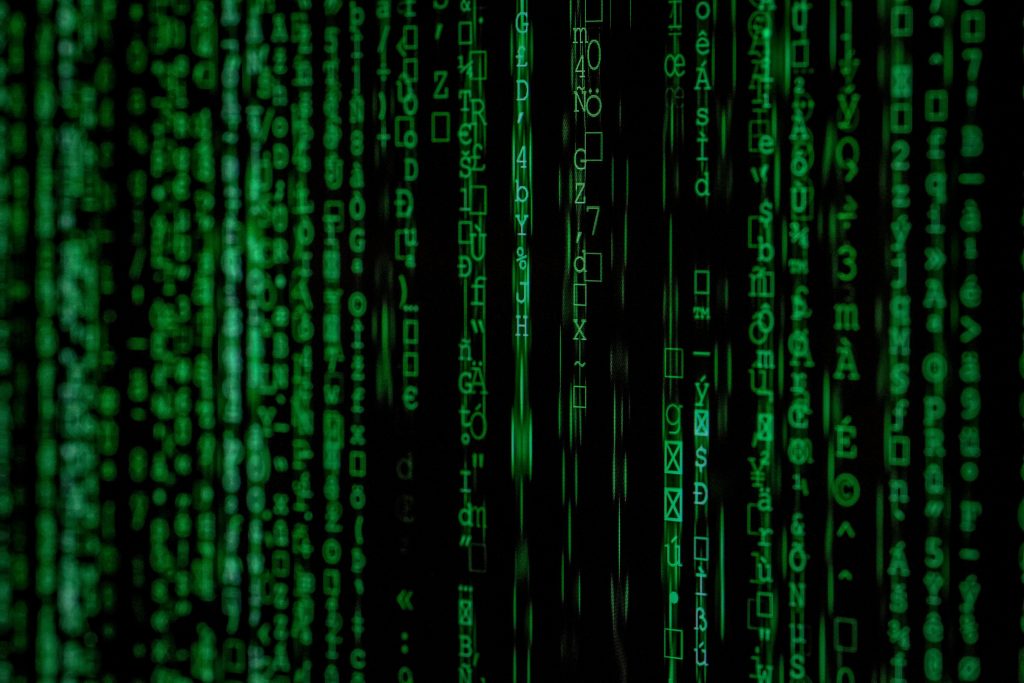Addressing PC Cooling Issues: A Comprehensive Guide for Gamers
Introduction
As a passionate gamer, you likely expect your setup to perform at its peak, delivering stunning graphics and smooth gameplay. However, the intricate electronics inside your computer can sometimes experience issues, leading to frustrating crashes and performance hiccups. A common problem that gamers encounter is related to their PC fans, which are crucial for cooling the components of your system. In this blog post, we will explore the possible reasons your fans may have stopped working, the relationship between fan issues and CPU performance, and what steps you can take to diagnose and resolve these problems effectively.
The Importance of PC Cooling
Modern gaming PCs generate a considerable amount of heat due to their powerful CPUs and GPUs. Efficient cooling is essential to maintaining performance, safeguarding your hardware, and prolonging the lifespan of your components. The primary role of the fans within your case is to circulate air, removing heat produced by the CPU and GPU, while drawing in fresh, cooler air. If the cooling components fail, you risk overheating your system, resulting in crashes or even permanent damage.
Common Symptoms of Cooling Problems
When your fans fail or underperform, several symptoms may manifest. Some of these include:
- Overheating: If your CPU or GPU temperature rises significantly, you may notice performance throttling or even system shutdown.
- System Crashes: Frequent crashes or unexpected restarts can be attributed to overheating caused by insufficient cooling.
- Loud or Unusual Noises: Strange noises, such as grinding or rattling, can indicate failing fans or obstructions in the cooling path.
- Error Messages: You may receive error messages on boot that indicate thermal issues or hardware failures.
If you’ve noticed any of these symptoms, your cooling system deserves immediate attention.
Potential Causes of Fan Failure
Your unfortunate experience with fan malfunctions may stem from various factors. Here’s a closer look at what’s likely happening:
1. Dust Accumulation
Over time, dust can build up within your case, obstructing airflow and reducing the effectiveness of your fans. Dust can settle on the fan blades, creating resistance and making it harder for the fans to rotate. Regular cleaning is crucial; using compressed air to blow out dust and debris should be part of your maintenance routine.
2. Electrical Issues
Fans rely on electrical connections and circuitry to function correctly. If there is a loose or damaged wire, the fan may not operate as intended. Inspecting the connections to each fan and ensuring that they are seated properly and free from visible damage is essential.
3. Fan Failures
Like any mechanical component, fans can fail. Motors wear out over time or may experience internal failure. If you’ve confirmed that the fans are receiving power but still aren’t spinning, it’s likely time for a replacement.
4. Thermal Paste Degradation
The thermal paste used to facilitate heat transfer between your CPU or GPU and its cooler can degrade over time. If the thermal paste has dried out, it can lead to higher temperatures, causing the fans to work overtime. Reapplying thermal paste can improve heat transfer and may resolve overheating issues that make the fans run continuously.
5. Overclocking and System Demands
Running demanding applications like Stellaris with mods may require more from your system than it can handle. If you’ve overclocked your CPU or GPU, this can strain the cooling system further, leading to overheating and a concerning performance drop. Ensuring that your cooling setup is sufficient to support any overclocking is vital.
Diagnosing the Issue
When trying to troubleshoot cooling problems, follow a systematic approach. Here’s how to do it:
Step 1: Check Fan Functionality
Begin by booting your system and checking if the fans spin up initially. Listen closely for any unusual noises or irregular spinning. If fans do not turn on at all or make distressing sounds, they may require replacement.
Step 2: Monitor Temperatures
Utilize Software like HWMonitor or SpeedFan to log temperature levels for both the CPU and GPU. If readings exceed the recommended thresholds—typically 70-80 degrees Celsius for CPUs and 80-90 for GPUs—your cooling may be inadequate. This could indicate a problem with fan performance or airflow.
Step 3: Inspect the BIOS Settings
Sometimes, fans may be controlled by settings within your BIOS/UEFI. Check for any fan control settings that might limit their speed or prevent them from turning on when needed. Adjusting these settings could provide an instant fix.
Step 4: Visual Inspection
Open your case carefully and inspect the fans visually. Look for dust buildup, damaged wires, and proper seating of the fan connections. If there is significant dust, it can be cleaned out, while visible damage may require replacing specific components.
Step 5: Testing Components
If the fans are faulty or the issue persists, testing the components one by one may reveal where the fault lies. For instance, if you have spare fans or a different power supply, swapping these components can help pinpoint the problem.
What Should You Replace?
Once you have diagnosed the issue, you can determine what needs replacing:
1. Fans
If the diagnosis points to defective fans, replacing them with a dependable model is the first step. Consider airflow ratings (CFM), noise levels (dBA), and bearing types when selecting new fans. Brands such as Noctua, Corsair, and Cooler Master are popular choices among gamers for their performance and reliability.
2. CPU Cooler
If your CPU cooler is not performing as expected or shows signs of age or damage, it might be prudent to replace it. Ensure that it is compatible with your CPU socket and offers adequate cooling capacity for your needs.
3. Thermal Paste
If the thermal paste appears degraded, it’s worth investing in high-quality thermal paste. Brands like Arctic Silver and Noctua’s thermal compounds provide excellent thermal conductivity.
4. Power Supply
In some cases, a failing power supply might impact fan operation or overall system performance. If you suspect power issues, consider a unit from a reputable brand that provides reliable wattage for your build.
5. Motherboard
Should all other components function correctly, you might be dealing with a defective motherboard. Issues with the motherboard can prevent power from reaching the fans or interfere with their operation. Diagnosing and replacing a motherboard is a more involved process, often requiring a transfer of connections and components.
Conclusion
Proper cooling is non-negotiable for a high-performing gaming PC. If you’ve observed signs that your fans aren’t working as they should, you must act swiftly. Whether through cleaning, component replacement, or enhancements of cooling efficiency, taking the right steps will help restore your system to its best performance.
As an avid gamer who recently encountered these issues, remember that regular maintenance is key. A clean, well-ventilated gaming rig is not only crucial for optimal performance but also ensures a longer lifespan for your hardware. By staying proactive and attentive to your cooling setup, you can enjoy uninterrupted gaming sessions for years to come.
Remember to stay connected with the gaming community as well; many platforms like Reddit and specialized forums are excellent resources for tips, experiences, and advice from fellow gamers who have faced similar challenges. Enjoy your gaming!
Share this content:




This post provides an excellent overview of troubleshooting fan issues, which can often be a frustrating experience for gamers. An additional point worth mentioning is the potential role of Software in managing fan performance. Many modern motherboards come with dedicated Software that allows users to customize and optimize fan speeds based on temperature thresholds or system demands.
Using these tools can help you minimize noise while ensuring adequate cooling during gaming sessions. Furthermore, consider utilizing fan control profiles that ramp up fan speed during intensive gaming but dial it down during less demanding usage, like browsing or watching videos.
It’s also vital to ensure that your case has good airflow design. Sometimes, simply rearranging cable management or using additional dust filters can significantly improve airflow and cooling efficiency.
Lastly, don’t underestimate the feedback from the gaming community; forums and discussion groups often have the latest insights on fan models and solutions tailored to specific builds or gaming needs. Let’s remember that a well-cooled PC isn’t just about performance—it creates a more enjoyable gaming experience overall!
Response from Technical Support
Hello,
Thank you for reaching out regarding your issue with fans not working in your gaming PC. This is a common concern among gamers, and I’m here to help you troubleshoot this effectively.
Based on your detailed description, it seems that you are experiencing symptoms typical of cooling failure. Let’s break down a few steps to help you diagnose the problem:
1. Initial Checks
First, please ensure that the fans are indeed receiving power. When you boot up your system, listen carefully to see if the fans initially spin up. If they do not respond at all, ensure the connections are secure and there are no visible damages to the wiring.
2. Dust and Obstructions
As mentioned in the article, dust accumulation is a frequent issue. If you haven’t already, please clean out the inside of your case using compressed air. Pay close attention to the fan blades and heatsinks.
3. Monitor Temperatures
Using Software like HWMonitor or SpeedFan, monitor your CPU and GPU temperatures. If they exceed normal operating ranges (70-80 degrees Celsius for CPUs), it is critical to address the cooling issue promptly to avoid system damage.
4. BIOS Settings
Check your BIOS/UEFI settings
Response
Hi there! I completely understand the frustrations that come with fans not working, as it can lead to significant performance issues for any gaming setup. Here are some detailed steps to help you troubleshoot and potentially resolve these fan issues:
1. Dust Troubles?
First, consider dust accumulation as a primary factor. If you haven’t already, open up your PC case and use compressed air to remove dust from fans, heatsinks, and vents. This can drastically improve airflow and cooling efficiency.
2. Check Connections
It’s essential to inspect the connections. Make sure that all fan cables are securely plugged into the motherboard or power supply. If there’s any visible damage to the wires, you might need to replace the cables or the fans themselves.
3. Power Supply Check
If your fans aren’t spinning but you can hear a faint hum, it could indicate a failing power supply. Ensure that the PSU is delivering enough power to support all components, especially if you’ve recently upgraded your hardware.
4. BIOS Fan Control
Entering the BIOS/UEFI and checking fan settings can yield insights as well. Make sure that fan control settings are set to a balanced profile rather than silent, which might limit their operation when under load.
5. Software Monitoring